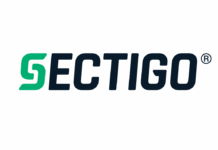for MSPs to compete against cloud-based offerings!
Managed Service Providers, similar to Enterprise Data Centers, are looking to consolidate their storage to build on their competitive advantage over public cloud providers. Their goals for consolidation, however, are unique.
MSPs need a backup storage solution that can:
• Increase tenants per rack unit
• Ease and accelerate tenant onboarding
• Manage more PB per storage administrator
• Reduce “dark” storage
• Adapt to new monthly recurring revenue (MRR) opportunities
New MSPs looking at backup services as a place to start their offerings must consider the complete picture of what their storage infrastructure will look like as they add new services. Experienced MSPs looking to handle potentially out-of-control storage costs should follow an approach that allows them to gradually replace disparate storage systems with a single system as they reach the end of maintenance.
In both cases, a successful storage consolidation strategy starts with the right backup storage target. That solution must meet the requirements of the backup software while also providing the capabilities to support other workloads.
Backup-First Storage
MSPs’ most pressing need is backup storage, primarily driven by the success of Veeam’s Cloud Connect. These solutions enable MSPs to provide archives of backup and disaster recovery site capabilities to thousands of Veeam customers worldwide. The backup storage solutions supporting these efforts need to provide incremental scalability, high utilization rates, high availability, rapid recovery from drive failure, and the ability to intermix drives of different capacities. Modern backup applications demand a more advanced backup storage solution, and MSPs have to meet these challenges across dozens to hundreds of customers.
Suppose the MSP enables customers to recover applications or entire data centers within their facilities. In that case, they often look for another storage system to deliver the performance and availability their customers expect. MSPs can, however, lower the cost of infrastructure and increase profits if the backup storage system can deliver production-class performance and availability while servicing recovered applications or customers.
However, their backup storage target must also be usable by other backup applications. MSPs often don’t have the luxury of prescribing the backup software the customer will use or the protocols the solution will use to move data to an alternate site. Flexibility without adding more storage silos is key to capturing more customers and maintaining profitability.
Replication as a Service
The need for flexibility becomes more critical for MSPs as they look for additional Monthly Recurring Revenue (MRR) opportunities. A logical next step is replication services, typically using a software application like Zerto. These applications require a unique combination of high-performance storage for the replication journal and low-cost storage to retain the customer’s data. This unique combination of IO demands means that the original backup storage solution needs to support a high-performance flash tier in addition to the hard disk tier. If the storage system can’t support these capabilities, the MSP is forced to purchase another storage system for replication activity.
NAS as a Service
Another MRR opportunity for MSPs is to provide Cloud Network Attach Storage for their customers. The performance capabilities of the replication target are often acceptable for this as long it has enough performance to support the total IO load of both use cases. However, file services require some unique capabilities that the original backup storage solution may not be able to deliver.
A top requirement is data encryption, but it should be selectable so that only volumes in the Cloud NAS use case are encrypted. In many cases, the backup and the replication software already provide encryption, and it is not advisable to “double-encrypt” data.
Beyond encryption, the Cloud NAS solution needs to provide standard features with on-premises NAS solutions. Features like snapshots and replication are must-haves for these customers but often lacking from backup storage targets. The Files service should also support NFS, SMB, and S3 to access data however the customer’s use case demands. The storage system also needs to be highly available and provide rapid recovery from drive failures.
Virtualization as a Service
Eventually, successful MSPs expand their services options to support their customer’s production workloads. These storage infrastructures need production-class availability, features, and performance. If the MSP is focused on a quality backup storage solution, it should continue to scale to support these requirements. The MSP may need to expand the existing flash tier or add a higher performance NVMe or Memory Class Storage tier.
It is critical again that the solution provides volume level IO tuning so that a customer can use the MSPs for various workloads, from backup to production. Volume level IO tuning ensures that each workload receives the performance, protection, and availability it demands.
Addressing Scale
An MSP that follows the backup-first storage consolidation strategy recommendation will need to address scale, significantly scaling capacity. The conventional wisdom dictates a scale-out solution, but these solutions don’t efficiently use rack space and decrease tenant density. A scale-up approach enables much higher tenant efficiency as long as it can meet the scaling demands. Based on the capabilities of modern storage hardware, an intelligently designed scale-up solution should scale to 30PBs of capacity while simultaneously delivering over a million IOPS in performance. If the solution intelligently blends flash and hard disk drives, it should enable the MSP to remain very price competitive.
Automatic Storage
A final consideration is how easily the storage solution will fit into the MSP’s infrastructure. The solution needs to provide complete programmability so the MSP can integrate tasks like provisioning and even system management into the portals they use internally or offer to their customers.
Is Backup-First Consolidation Possible?
The concept of creating a storage consolidation strategy with a backup-storage-first mentality seems impossible, especially for experienced MSPs that already have to deal with a highly siloed infrastructure. Examining the potential hardware capabilities that make up the infrastructure will show that this type of consolidation is possible. So what is holding this hardware back? The storage software.
Most storage vendors focus on delivering a feature or two instead of addressing the core storage software engine. They leverage obsolete code over a decade old and not optimized for the potential of today’s hardware. The answer is to rewrite the core storage engine from scratch. The challenge is that most storage software companies won’t invest the years in rewriting the foundation from the ground up.
If the storage vendor will invest, then it is well worth it. The result is a storage system that is competitively priced against backup storage targets today yet provides the production-class performance and availability to grow to support all the services the MSP might offer in the future.
Source: StorONE















